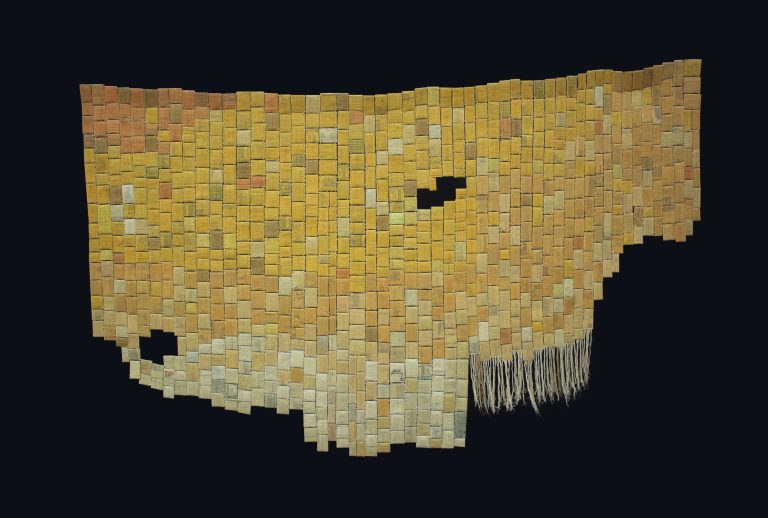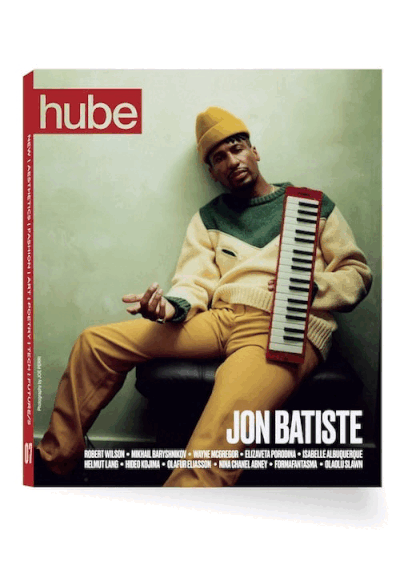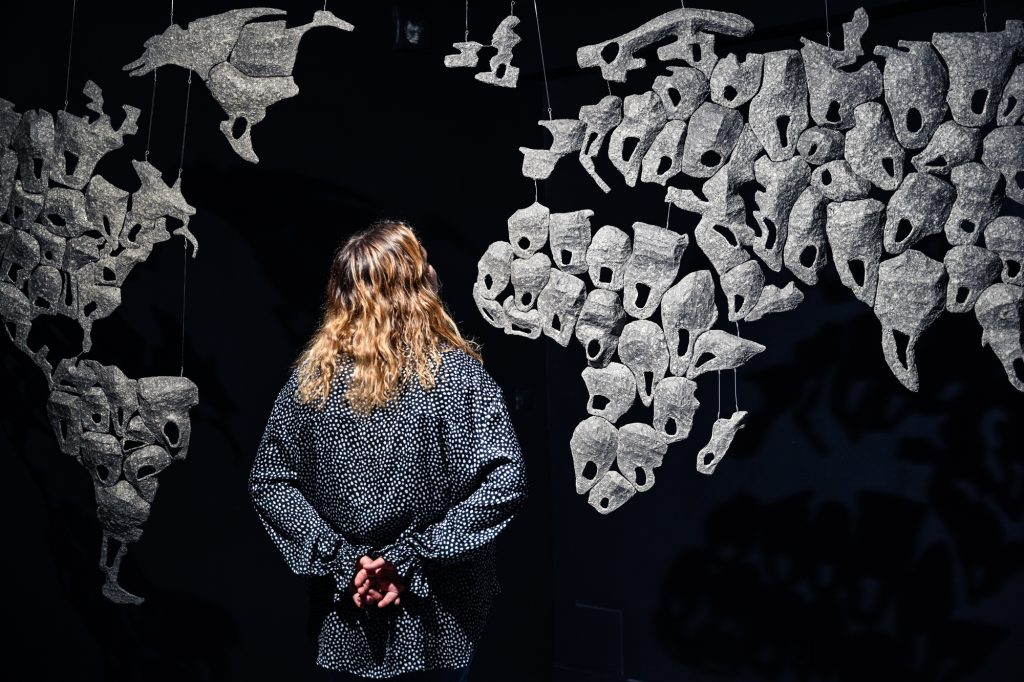
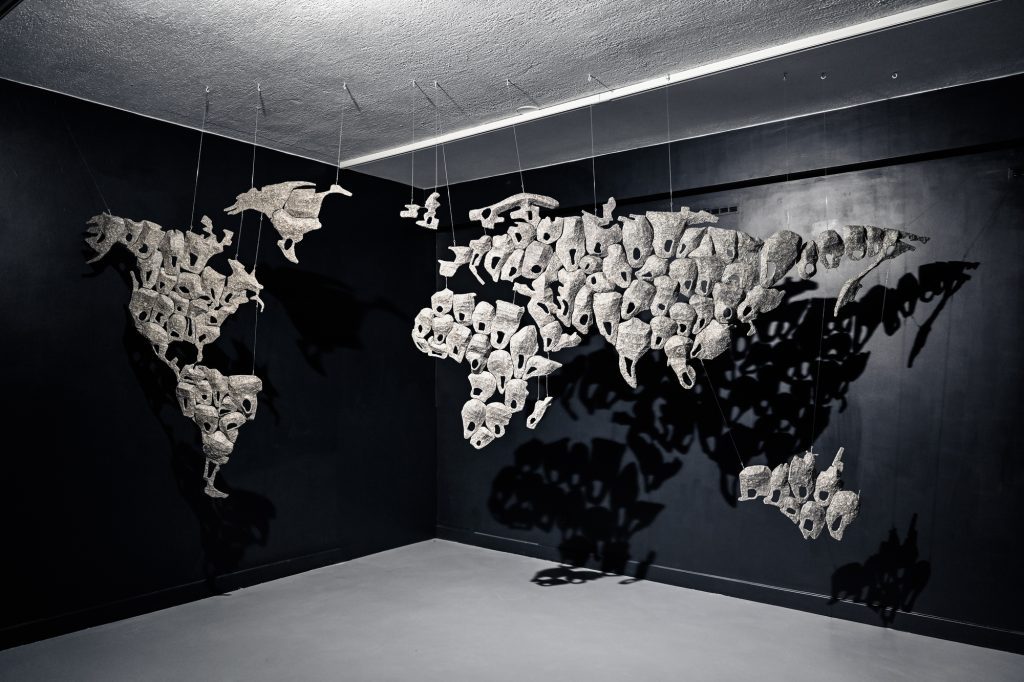
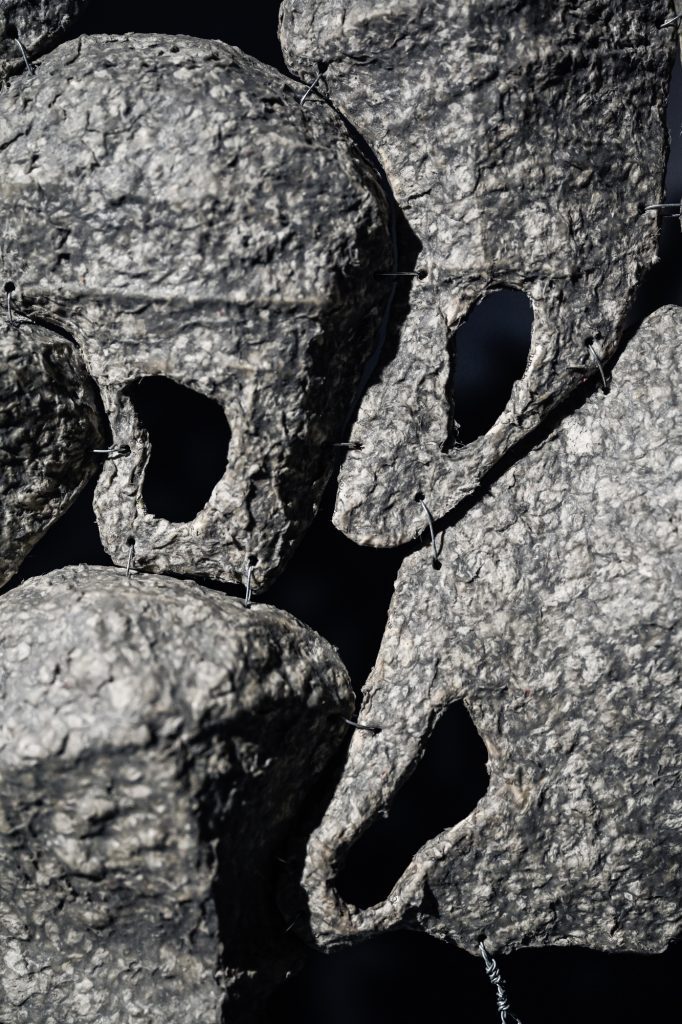
Ange Dakouo, a visionary artist from Mali, masterfully intertwines traditional donso hunter amulets with contemporary art, creating his signature “woven gris-gris” technique. His work, which blends the tactile richness of textiles with the intricacies of paper, bridges cultural heritage and modernity.
hube: Your technique, gris-gris tissé, is deeply inspired by the amulets worn by Malian traditional hunters. Could you share more about how these objects influence your artistic process and the symbolism behind them?
Ange Dakouo: My woven gris-gris technique, the gris-gris tissé, is indeed strongly influenced by the amulets worn by traditional Malian hunters, also known as donso. These objects inspire me through their symbolism of protection and spiritual connection with nature.
I consider these gris-gris as ancestral knowledge, enriching my work by providing a deep source of inspiration. They offer me traditional motifs, themes and techniques that I incorporate into my creations, thus establishing a link between the contemporary and cultural heritage. This gives my art a narrative and symbolic dimension, strengthening the connection with my roots while offering a contemporary perspective.
h: Your works seem to blur the lines between textile art and paper art, creating a unique visual experience for viewers. How do you balance the usage of paper with textiles?
AD: The intertwining of textile art and paper art is at the core of my artistic practice. I strive to create a unique visual experience by harmoniously blending these two mediums. To balance the use of paper and textiles, I play with textures, patterns, and manipulation techniques to create works that transcend the boundaries between the two mediums.
h: Growing up as the son of a printer, how has your familial background influenced your approach to art, particularly in your use of recycled newsprint as a medium?
AD: My experience as the son of a printer has profoundly influenced my artistic approach. Growing up surrounded by paper, I learned to value available resources. Using recycled newspapers as a medium in my art is both a tribute to my father and a reflection on sustainability and material reuse.
h: In your exhibitions, such as Les Boîtes Rouges and Demain sera meilleur, you’ve showcased your art in diverse settings. How do you adapt your work to different exhibition spaces, and what do you hope viewers take away from each experience?
AD: Adapting my work to different exhibition spaces is essential for creating immersive experiences for viewers. For each exhibition, I consider the architecture, light, and atmosphere to present my works in the most impactful way possible. I hope that viewers leave each experience with a new perspective on the relationship between art, space, and their own sensory experience.
